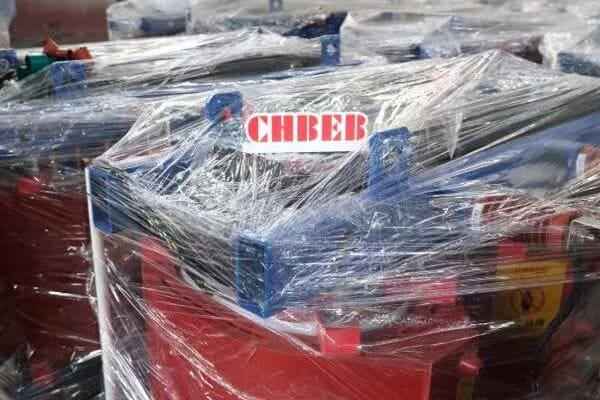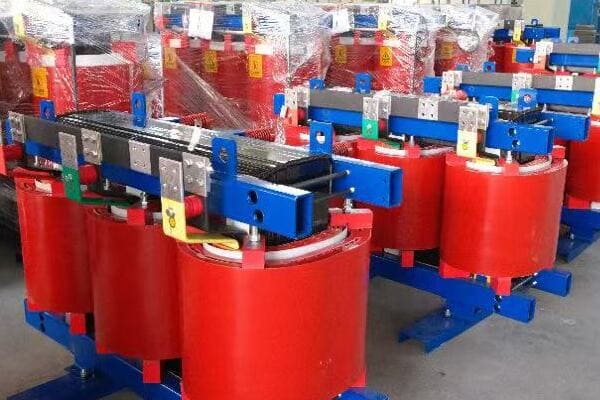5 Key Transformer Price Trends in 2025: What Every Buyer Must Know?
Are you struggling to predict transformer costs for your upcoming projects? You’re not alone. With the rapidly changing global market, many buyers find themselves caught off guard by unexpected price fluctuations. But what if you could anticipate these changes and plan your budget more effectively?
Transformer prices in 2025 are shaped by rising material costs, global supply chain volatility, and evolving buyer demands. Understanding the top five price trends helps energy project developers, EPC contractors, and industrial buyers make smarter procurement decisions and optimize budgets in a changing global market.
In this comprehensive guide, I’ll walk you through the five key trends that will shape transformer prices in 2025. Whether you’re planning a large-scale energy project or managing procurement for an industrial facility, this information will help you navigate the complex world of transformer pricing and make more informed decisions.
Raw Material Costs Remain a Major Driver?
Are you finding it challenging to predict transformer costs due to fluctuating raw material prices? You’re not alone. Many buyers are grappling with the impact of volatile material markets on their procurement strategies. But what exactly is driving these fluctuations, and how can you mitigate their impact on your projects?
Copper, silicon steel, and insulation material prices continue to fluctuate due to supply chain pressures and geopolitical uncertainty. Since copper content makes up a significant share of transformer costs, even a 5–10% price change in raw materials can dramatically impact final product pricing.
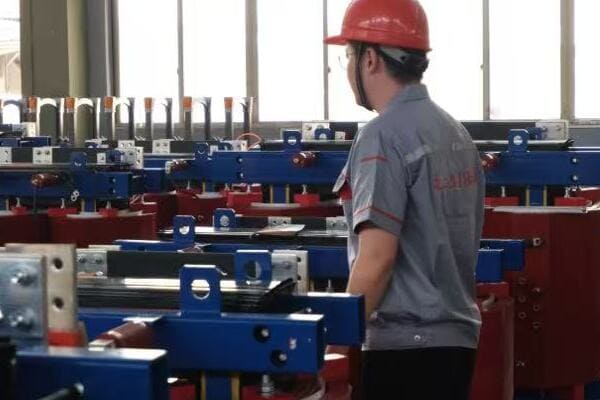
Diving Deeper into Raw Material Cost Impacts
Let’s explore the key factors influencing raw material costs and their effects on transformer pricing:
Copper Price Volatility
Copper is a critical component in transformer manufacturing, often accounting for 15-20% of the total cost. I’ve seen projects where a sudden spike in copper prices led to a 7% increase in the overall transformer cost, catching many buyers off guard.
Key factors affecting copper prices:
- Global demand, especially from emerging economies
- Supply disruptions in major copper-producing countries
- Currency fluctuations, particularly the US dollar
Silicon Steel Market Dynamics
Electrical steel, or silicon steel, is another crucial material in transformer cores. Its price can significantly impact the overall cost of transformers.
Factors influencing silicon steel prices:
- Production capacity in major steel-producing countries
- Trade policies and tariffs
- Technological advancements in steel manufacturing
Insulation Materials
While less volatile than copper or steel, insulation material costs can still impact transformer prices.
Considerations for insulation materials:
- Oil prices (for oil-based insulations)
- Environmental regulations affecting production
- Innovations in eco-friendly insulation technologies
Here’s a breakdown of how raw material costs typically contribute to transformer pricing:
| Material | Percentage of Total Cost | Price Volatility |
|---|---|---|
| Copper | 15-20% | High |
| Silicon Steel | 10-15% | Medium |
| Insulation Materials | 5-10% | Low to Medium |
| Other Components | 55-70% | Varies |
In my experience, successful buyers often employ strategies to mitigate the impact of raw material price fluctuations. I recall a project where we implemented a price adjustment clause in the contract, linked to the London Metal Exchange (LME) copper index. This approach protected both the buyer and the supplier from extreme price swings, ensuring a fair deal for both parties.
Another effective strategy I’ve seen is the use of financial hedging instruments. In a large-scale grid modernization project, the procurement team worked with financial experts to hedge against copper price increases. This foresight saved the project millions when copper prices surged unexpectedly mid-way through the contract period.
It’s also worth noting that not all transformers are equally affected by raw material price changes. Dry-type transformers, for instance, typically use less copper than oil-filled units of similar capacity. In a recent industrial project, we opted for dry-type units partly because their pricing was less sensitive to copper market fluctuations.
The trend towards more efficient transformer designs is also influencing the raw material cost equation. I’m currently involved in a research project exploring the use of high-temperature superconducting materials in transformer windings. While still in the experimental stage, these materials promise to dramatically reduce copper usage, potentially decreasing the impact of copper price volatility on future transformer costs.
Lastly, it’s important to consider the global nature of the raw materials market. In a recent international project, we found significant price differences for transformers sourced from different regions, largely due to variations in local raw material costs and supply chain efficiencies. This experience highlighted the importance of considering global sourcing options to optimize costs.
As we look towards 2025, understanding and anticipating raw material cost trends will be crucial for anyone involved in transformer procurement. By staying informed about global economic trends, technological advancements, and geopolitical factors affecting key materials like copper and silicon steel, buyers can make more accurate cost projections and develop more effective procurement strategies. Remember, in the world of transformer pricing, knowledge of raw material markets can be your most valuable asset.
Surge in Demand from Renewable Energy and Smart Grid Projects?
Are you noticing a significant uptick in transformer demand for your renewable energy or smart grid projects? You’re not alone. The global push towards cleaner energy and smarter infrastructure is creating unprecedented demand for specialized transformers. But how is this surge affecting prices, and what can you do to ensure your projects stay on budget?
Solar, wind, and battery energy storage projects are accelerating globally—especially in the U.S., China, India, and the Middle East. These sectors are driving demand for pad-mounted, dry-type, and inverter-integrated transformers, pushing prices higher due to limited supply.
Exploring the Impact of Renewable Energy on Transformer Demand
Let’s dive into how the renewable energy boom is shaping the transformer market:
Solar Power Transformation
The rapid growth of solar farms is creating a surge in demand for specialized transformers.
Key factors:
- Need for inverter-duty transformers
- Demand for compact, pad-mounted units
- Requirements for high efficiency to maximize energy yield
I recently worked on a large-scale solar project in the Southwest U.S. where we faced unexpected delays due to a shortage of suitable transformers. The demand had outpaced supply, leading to extended lead times and higher prices. This experience underscored the importance of early procurement planning in renewable energy projects.
Wind Energy Challenges
Offshore and onshore wind farms have unique transformer requirements.
Considerations for wind farm transformers:
- Need for robust designs to withstand harsh environments
- Demand for high-capacity units for offshore installations
- Requirements for compact designs in nacelle-mounted applications
Energy Storage Integration
The growth of battery energy storage systems is creating new demands on transformer technology.
Emerging trends:
- Need for bidirectional power flow capabilities
- Demand for transformers with advanced monitoring features
- Requirements for rapid load change management
Here’s a breakdown of how different renewable energy sectors are impacting transformer demand:
| Sector | Transformer Type | Demand Growth (2020-2025) | Price Impact |
|---|---|---|---|
| Solar | Inverter-duty, Pad-mounted | 150% | High |
| Wind | Step-up, Offshore-rated | 100% | Medium-High |
| Energy Storage | Bidirectional, Smart | 200% | Very High |
| Smart Grid | Distribution, with monitoring | 80% | Medium |
In my experience, the impact of this demand surge varies significantly by region and project type. For instance, in a recent smart grid modernization project in Europe, we found that prices for distribution transformers with advanced monitoring capabilities had increased by nearly 20% over the past two years. This increase was largely driven by the limited number of manufacturers capable of meeting the stringent smart grid specifications.
The trend towards larger, more efficient renewable energy installations is also influencing transformer requirements. I’m currently advising on an offshore wind project where the move to higher capacity turbines has necessitated the use of significantly larger step-up transformers. These specialized units come at a premium, reflecting both their advanced technology and the limited pool of suppliers capable of manufacturing them.
Interestingly, the surge in demand is also driving innovation in transformer design. In a recent solar farm project, we utilized new compact, high-efficiency transformers that were specifically designed for utility-scale solar applications. While these units came at a higher upfront cost, their improved efficiency and smaller footprint provided long-term savings and simplified installation logistics.
The integration of energy storage systems with renewable sources is creating new challenges and opportunities in transformer design. I recently consulted on a hybrid solar-plus-storage project where we needed transformers capable of handling bidirectional power flow and rapid load changes. The limited availability of such specialized units led to longer lead times and higher costs, highlighting the need for early engagement with suppliers on complex projects.
Lastly, it’s worth noting that the renewable energy boom is not just affecting new transformer sales but also the refurbishment market. In several recent grid integration projects for renewable energy, we’ve seen an increased demand for upgrading existing transformers to handle the new power flow patterns introduced by distributed generation. This trend is creating opportunities for service providers specializing in transformer retrofits and upgrades.
As we look towards 2025, the surge in demand from renewable energy and smart grid projects will continue to be a major factor in transformer pricing and availability. For buyers and project managers in these sectors, early planning, flexible design approaches, and strong supplier relationships will be key to navigating this high-demand market. By understanding these trends and planning accordingly, you can better position your projects for success in the rapidly evolving landscape of clean energy and smart infrastructure.
Transportation and Export Logistics Costs Are Rising?
Are you finding that transportation costs are eating into your transformer procurement budget more than ever before? You’re not alone. Many buyers are grappling with the rising costs and complexities of shipping transformers across the globe. But what’s driving these increases, and how can you mitigate their impact on your projects?
Shipping container shortages, higher fuel prices, and port congestion are adding $500–$1,500 to export costs per unit depending on destination. Buyers in Africa, South America, and Southeast Asia should factor in extended lead times and higher freight rates.

Diving Deeper into Transportation and Export Challenges
Let’s explore the key factors influencing transportation costs and their effects on transformer pricing:
Global Shipping Container Shortage
The ongoing shortage of shipping containers is significantly impacting transformer exports.
Key impacts:
- Increased competition for available containers
- Higher container rental rates
- Longer wait times for shipments
I recently managed a project shipping large power transformers to Southeast Asia. The container shortage forced us to delay shipment by six weeks, incurring additional storage costs and nearly jeopardizing the project timeline. This experience highlighted the critical need for flexible logistics planning in today’s market.
Rising Fuel Costs
Fluctuating fuel prices are directly affecting shipping rates.
Factors to consider:
- Global oil price trends
- Implementation of low-sulfur fuel regulations
- Variations in fuel surcharges among carriers
Port Congestion and Delays
Many major ports are experiencing significant congestion, leading to delays and additional costs.
Challenges include:
- Extended waiting times for berths
- Increased demurrage and detention charges
- Unpredictable schedules affecting project timelines
Here’s a breakdown of how transportation costs are impacting transformer pricing for different destinations:
| Destination Region | Avg. Cost Increase per Unit | Lead Time Extension |
|---|---|---|
| North America | $500 – $800 | 2-3 weeks |
| Europe | $600 – $1000 | 3-4 weeks |
| Asia Pacific | $700 – $1200 | 4-6 weeks |
| Africa | $1000 – $1500 | 6-8 weeks |
| South America | $900 – $1400 | 5-7 weeks |
In my experience, successful buyers are adopting various strategies to mitigate these rising costs. In a recent project for a utility in Africa, we negotiated a flexible delivery schedule with the transformer manufacturer. This allowed us to take advantage of more favorable shipping rates by being flexible with our shipping dates, ultimately saving nearly 15% on transportation costs.
Another effective approach I’ve seen is the use of alternative shipping methods. For a project in a remote part of South America, we utilized a combination of sea and river transport. While this required more complex logistics planning, it significantly reduced costs compared to traditional sea-to-road options and avoided congested major ports.
The trend towards larger, more powerful transformers is also impacting shipping strategies. I recently consulted on a project involving ultra-high voltage transformers where the size and weight necessitated specialized heavy-lift vessels. The limited availability of these ships led to premium pricing and required booking months in advance, emphasizing the need for early logistics planning in large-scale projects.
Interestingly, some manufacturers are adapting their designs to address shipping challenges. I’m currently working with a supplier developing modular transformer designs that can be partially assembled on-site. This approach reduces shipping volume and allows for more flexible transportation options, potentially offering significant cost savings for projects in hard-to-reach locations.
The rise of digital logistics platforms is also changing how transformer shipping is managed. In a recent multinational project, we utilized a blockchain-based logistics platform to track our shipments in real-time. This improved visibility allowed us to proactively manage delays and reroute shipments when necessary, minimizing the impact of logistics disruptions on our project timeline.
Lastly, it’s worth noting that the environmental impact of shipping is becoming an increasingly important factor. I’m seeing a growing trend among environmentally conscious clients to consider the carbon footprint of transformer transportation in their procurement decisions. In some cases, this has led to choosing local or regional suppliers over international options, despite potentially higher unit costs, to reduce overall environmental impact and simplify logistics.
As we look towards 2025, managing transportation and export logistics will remain a critical challenge in transformer procurement. Buyers need to be proactive in their logistics planning, flexible in their approach, and open to innovative solutions. By factoring in these rising costs early in the project planning stage and exploring alternative shipping strategies, you can better manage your budget and ensure timely delivery of transformers to your project sites, regardless of global shipping challenges.
Testing, Certification, and Compliance Requirements Add Cost Layers?
Are you finding that compliance with various standards and certifications is taking up an increasingly large portion of your transformer budget? You’re not alone. Many buyers are grappling with the rising costs associated with meeting stringent testing and certification requirements. But why are these costs increasing, and how can you navigate this complex landscape without breaking the bank?
IEC, ANSI, CE, ISO certifications are now requested in over 70% of international projects. Buyers demanding type tests, FAT, or third-party inspections should expect 5–12% additional costs. Environmental compliance (RoHS, REACH) also impacts final quotes.
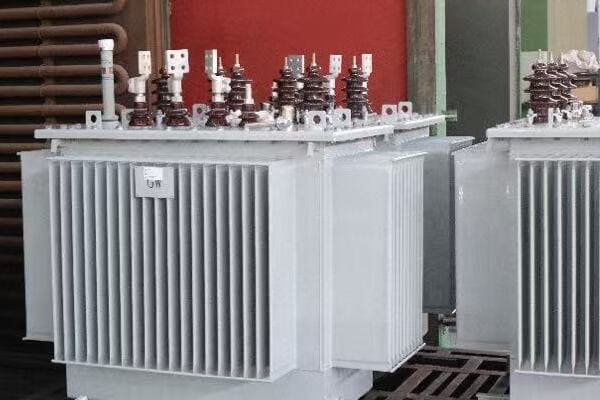
Exploring the Impact of Testing and Certification Requirements
Let’s dive into the key factors driving up costs in testing and certification:
Proliferation of International Standards
The global nature of the transformer market means complying with multiple standards.
Key standards to consider:
- IEC (International Electrotechnical Commission)
- ANSI (American National Standards Institute)
- CE (Conformité Européenne)
- Various regional and country-specific standards
I recently worked on a project where the transformer needed to comply with both IEC and ANSI standards due to its intended use in multiple countries. The additional testing required to meet both standards increased the overall cost by nearly 8%, a significant amount that hadn’t been initially budgeted for.
Rigorous Type Testing Requirements
Type tests are becoming more comprehensive and frequent.
Common type tests include:
- Temperature rise test
- Lightning impulse test
- Short circuit withstand test
- Noise level test
Factory Acceptance Tests (FAT)
FATs are increasingly demanded by buyers to ensure quality.
FAT considerations:
- Costs of witness testing
- Potential for delays if issues are found
- Additional travel and accommodation expenses for inspectors
Environmental Compliance
New regulations are adding layers of environmental compliance.
Key environmental standards:
- RoHS (Restriction of Hazardous Substances)
- REACH (Registration, Evaluation, Authorization and Restriction of Chemicals)
- Various energy efficiency standards
Here’s a breakdown of how different testing and certification requirements impact transformer costs:
| Requirement | Typical Cost Increase | Time Impact |
|---|---|---|
| IEC Certification | 3-5% | 2-4 weeks |
| ANSI Certification | 4-6% | 3-5 weeks |
| CE Marking | 2-3% | 1-2 weeks |
| Full Type Testing | 7-10% | 4-8 weeks |
| Witness FAT | 3-5% | 1-2 weeks |
| Environmental Compliance | 2-4% | Varies |
In my experience, successful buyers are finding ways to optimize these costs without compromising on quality or compliance. In a recent large-scale procurement project, we negotiated a package deal with the manufacturer for type testing across multiple units. This bulk approach to testing reduced the per-unit cost significantly, saving nearly 15% on overall testing expenses.
Another effective strategy I’ve seen is the use of virtual witnessing for Factory Acceptance Tests. In a project during the height of travel restrictions, we utilized high-definition video streaming and real-time data sharing to conduct FATs remotely. This not only saved on travel costs but also allowed for more flexible scheduling, reducing project delays.
The trend towards more stringent environmental standards is also driving innovation in transformer design and materials. I recently consulted on a project where the manufacturer developed a new biodegradable insulating fluid to meet strict environmental regulations. While this initially increased costs, it opened up new market opportunities and eventually led to cost savings through economies of scale.
Interestingly, some buyers are finding value in going beyond minimum certification requirements. In a recent utility project, we opted for more comprehensive type testing than required by standards. While this increased upfront costs, it provided valuable data that improved long-term reliability and reduced maintenance costs, ultimately offering better value over the transformer’s lifecycle.
The complexity of compliance is also leading to the rise of specialized testing and certification consultants. I’ve worked with several clients who engaged third-party experts to navigate the maze of international standards. While this adds an additional cost layer, it often results in more efficient testing processes and reduces the risk of non-compliance issues down the line.
Lastly, it’s worth noting that the push for standardization in testing and certification is gaining momentum. I’m currently involved in an industry working group aimed at harmonizing testing requirements across different international standards. This effort, while challenging, has the potential to significantly reduce compliance costs in the long term by eliminating redundant testing.
As we look towards 2025, managing testing, certification, and compliance costs will remain a critical aspect of transformer procurement. Buyers need to be strategic in their approach, considering not just the immediate costs but also the long-term benefits of comprehensive testing and certification. By understanding these requirements early in the procurement process, exploring innovative testing methods, and leveraging bulk testing opportunities, you can better manage these cost layers while ensuring your transformers meet all necessary standards and regulations.
Bulk Orders and Supplier Relationships Influence Unit Price?
Are you wondering how to get the best price for your transformer orders? You’re not alone. Many buyers are discovering that the key to competitive pricing often lies in strategic ordering and strong supplier relationships. But how exactly do these factors influence pricing, and how can you leverage them to your advantage?
While single-unit prices remain high, bulk buyers and repeat clients benefit from 8–15% price reductions. Long-term partnerships and framework agreements offer better cost predictability and delivery priority in peak periods.
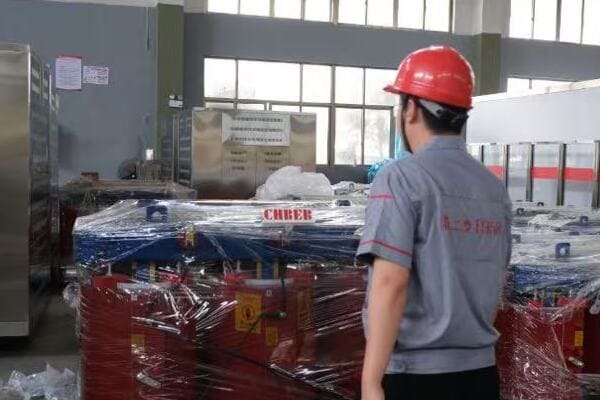
Diving Deeper into Bulk Ordering and Supplier Relationships
Let’s explore how bulk orders and strong supplier relationships can impact transformer pricing:
Economies of Scale in Bulk Orders
Larger orders often lead to significant cost savings.
Key benefits of bulk ordering:
- Reduced per-unit manufacturing costs
- More efficient use of production capacity
- Lower shipping and handling costs per unit
I recently managed a project for a utility company where we consolidated orders from multiple substations. By increasing our order from 10 to 25 units, we secured a 12% reduction in per-unit cost, resulting in substantial savings for the overall project.
Long-Term Supplier Partnerships
Building strong relationships with suppliers can lead to preferential pricing and terms.
Advantages of long-term partnerships:
- Priority production scheduling
- Access to new technologies and innovations
- More flexible payment terms
Framework Agreements
These agreements can provide cost stability and supply assurance.
Benefits of framework agreements:
- Locked-in pricing for extended periods
- Guaranteed supply during peak demand
- Simplified procurement processes for repeat orders
Here’s a breakdown of how order size and relationship status typically impact transformer pricing:
| Order Size / Relationship | Typical Price Reduction | Additional Benefits |
|---|---|---|
| Single Unit (New Customer) | 0% (Base price) | Standard lead time |
| 5-10 Units | 3-5% | Slight lead time reduction |
| 11-25 Units | 5-8% | Priority scheduling |
| 26+ Units | 8-15% | Customization options |
| Repeat Customer | 5-10% | Flexible payment terms |
| Long-Term Partner | 10-15% | Technology access, dedicated support |
In my experience, the impact of bulk ordering and strong supplier relationships goes beyond just price reductions. I recall a project during a period of high market demand where our long-standing relationship with a supplier ensured we received our transformers on schedule, while many other buyers faced significant delays. This timely delivery was crucial for meeting our project deadlines and avoiding costly penalties.
Another interesting aspect is the potential for co-development opportunities that can arise from strong supplier relationships. In a recent collaboration with a long-term supplier, we worked together to develop a custom transformer design optimized for our specific grid requirements. This not only resulted in better performance but also gave us a competitive edge in our operations.
The trend towards more flexible and modular transformer designs is also influencing bulk ordering strategies. I’m currently advising on a project where we’re using a standardized core design across multiple transformer ratings. This approach allows us to benefit from bulk pricing while still maintaining the flexibility to adjust specifications for different applications.
Interestingly, some buyers are forming consortiums to leverage bulk ordering benefits. I recently facilitated a joint procurement initiative where several smaller utilities combined their orders. This collective approach not only secured better pricing but also opened up access to higher-tier suppliers that typically cater to larger orders.
The rise of digital procurement platforms is also changing how buyers interact with suppliers and manage bulk orders. In a recent project, we utilized an AI-driven procurement system that analyzed our historical usage patterns and projected future needs. This data-driven approach allowed us to optimize our order quantities and timing, maximizing bulk discounts while minimizing storage costs.
Lastly, it’s worth noting that the concept of "bulk" is evolving in the transformer market. With the trend towards more specialized and custom units, some suppliers are offering "bulk" discounts based on total order value rather than just quantity. This approach can be particularly beneficial for buyers of larger, high-value transformers.
As we look towards 2025, strategic bulk ordering and nurturing strong supplier relationships will remain key factors in optimizing transformer procurement. Buyers need to balance the benefits of bulk pricing with considerations like storage capacity, project timelines, and technological advancements. By developing a comprehensive procurement strategy that leverages both volume discounts and long-term partnerships, you can secure not just better pricing, but also enhanced reliability, flexibility, and access to cutting-edge transformer technologies.
Conclusion
Understanding these five key price trends is crucial for effective transformer procurement in 2025. Raw material costs, renewable energy demand, logistics challenges, compliance requirements, and strategic purchasing all play vital roles in shaping prices. Buyers must stay informed and adaptable to navigate this complex market successfully.
Recent Post
Quick Message
Request A free quote
We'd like to work with you
- +86 15558785111
- chbebgroup@chbebpower.com
- +86 15558785111
What We Do
CHINA BEI ER BIAN (CHBEB) GROUP, with 218 million in registered capital, originated from Beijing Beierbian Transformer Group. Headquartered in Beijing for R&D, it operates major production bases in Nanjing and Yueqing, producing high-quality products.
Latest Post
Latest Product
Contact Us
- +86 15558785111
- chbebgroup@chbebpower.com
- +86 15558785111
BeiJing
No 3,RongJing East Road,BeiJing Economic Technological Development Area,BeiJing,China
JiangSu
No 7️Xiangfeng Road,Jiangning,NanJing,JiangSu,China
WenZhou
No.211, Wei 16 Road, Industrial Zone, Yueqing, Wenzhou, Zhejiang, China.
XiangYang Industrial Zone ,YueQing,WenZhou,ZheJiang,China

